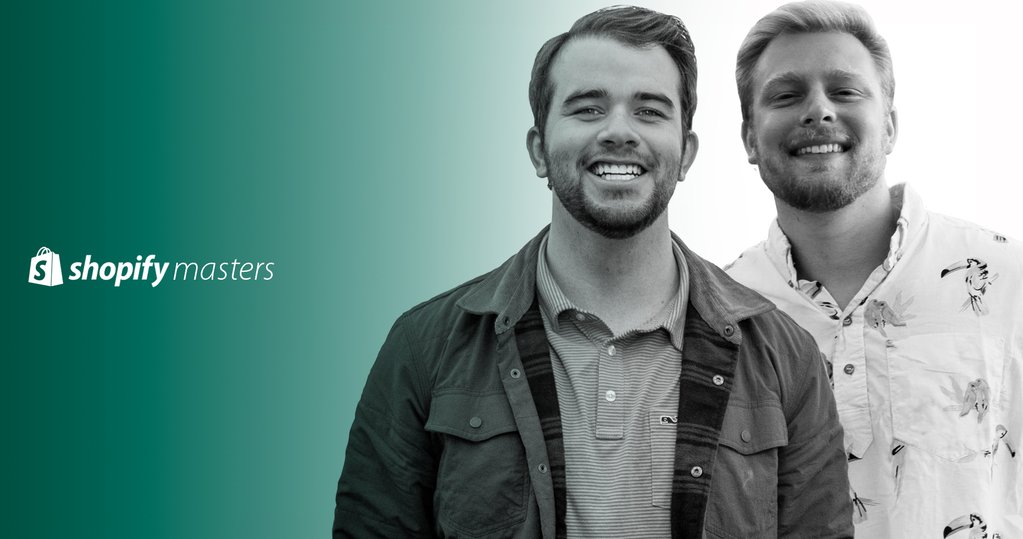Friends Logan LaMance, Ryan Frazier, Teddy Giard, Austin Maxwell, and Kyle Self got the inspiration for their business Kanga when they noticed how tailgating parties always resulted in lukewarm drinks and messy melting ice. The group developed a no ice cooler case for drinks which led to a Kickstarter campaign and a Shark Tank appearance. In this episode of Shopify Masters, Austin Maxwell and Kyle Self of Kanga shares their product development process, ways to seek feedback, and goals for the next year.
Show Notes
- Store: Kanga
- Social Profiles: Facebook, Twitter, Instagram
- Recommendations: Optinmonster, Shogun (Landingpage Builder), Klavyio, ShipStation
Class project turned business venture
Felix Thea: Tell us about the class project that inspired Kanga?
Kyle Self: We were in an entrepreneurship class in the spring of 2017 at Clemson University down in South Carolina, and our class was tasked with a project to develop a solution to a problem that we faced on a regular basis. And being down in the South, being a large ACC football school, something that we regularly faced when we were tailgating was warm beer.
The reason we were walking around with warm beer is that you really only have two options on game day when you've got multiple miles to walk from tailgate to tailgate, or to the bars, or to the stadium, wherever you're going. So what we would do is, we would go to a convenience store, grab a cold 12 pack of beer, and just walk around with it, something that we like to call a "naked case” or “public brewdity”. So we'd walk around with that case of beer, and the handle would get soggy and rip on us, and the beers would get warm within an hour or two. But the alternative was for us to bring our four hundred dollar massive Yeti coolers which we all have and we all love, but it wasn't the most practical option for walking around four, five, six, seven hours tailgating on game day.
So we invented the world's first koozie for an entire case of beer or soda. So we took that same concept that you'll see on any other can insulator, it's a high-quality neoprene that wraps around the can itself, and the idea is to just keep the beverage cold for the length that you're going to be consuming it.
So we thought, why isn't there something that exists that will keep the entire case of beer cold for the entire length that you're going to be consuming that case of beer? And that's how the idea was founded, and the class project was a great way to put things together although we did end up with a B on the project, it's not something that we were too bitter about.
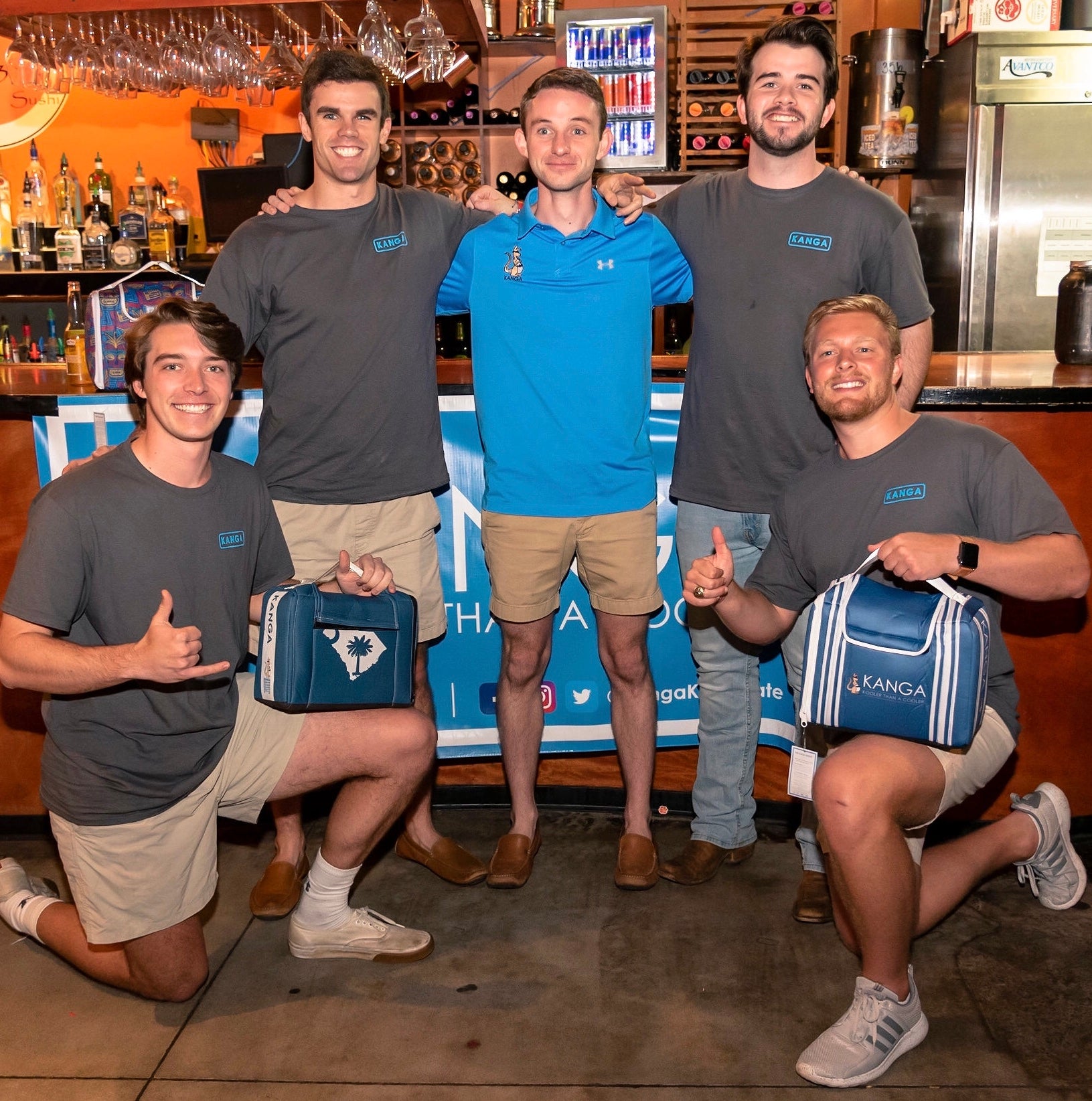
Felix: What made you guys decide to pursue this even further outside of the classroom?
Kyle: We didn't really know f it was going to work or not, but everyone who was part of the group at that point was really passionate about entrepreneurship and creating something out of nothing, and doing something a little bit bigger than just the class project. And from that point, we ended up taking a roll of scuba foam to a local seamstress and a 12 pack of beer, and we asked the seamstress if she was able to wrap something around the case of beer and create a sleeve.
And we said, "If you're able to develop this for us, this prototype, we'll let you keep the 12 pack of beer." And she said, "Absolutely." And that's how the first prototype was made. And the team just had that mentality that, hey, if this works, if this is actually able to keep the beverages cold, then why would we not want to pursue this, why would we not want to take the risk? There's really no better time than to pursue a company than when you're in college. Then it led us to onto a Kickstarter campaign and grow from there.
Prototyping to manufacturing post Kickstarter
Felix: Were there any other steps that you took to determine if there were other people that would pay for a product like this?
Austin Maxwell: The most important thing when you start a company, especially a consumer good, is that you've got to test the market. So we were able to find a local manufacturer in Greenville, South Carolina, about 45 minutes up the road, and we made 150 prototypes and we just leaned on our local network and people in the area. We sold all 150 in about three weeks, which was a good success, but we wanted to get their feedback before we actually moved onto the next sides.
We learned a lot from that. Our original product was very thin, and that was a big red flag for us, and the original product didn't even have a handle. So the same issue that we were running into when we were just walking around with the naked cases and the handle breaking, was happening even after we made our first prototype.
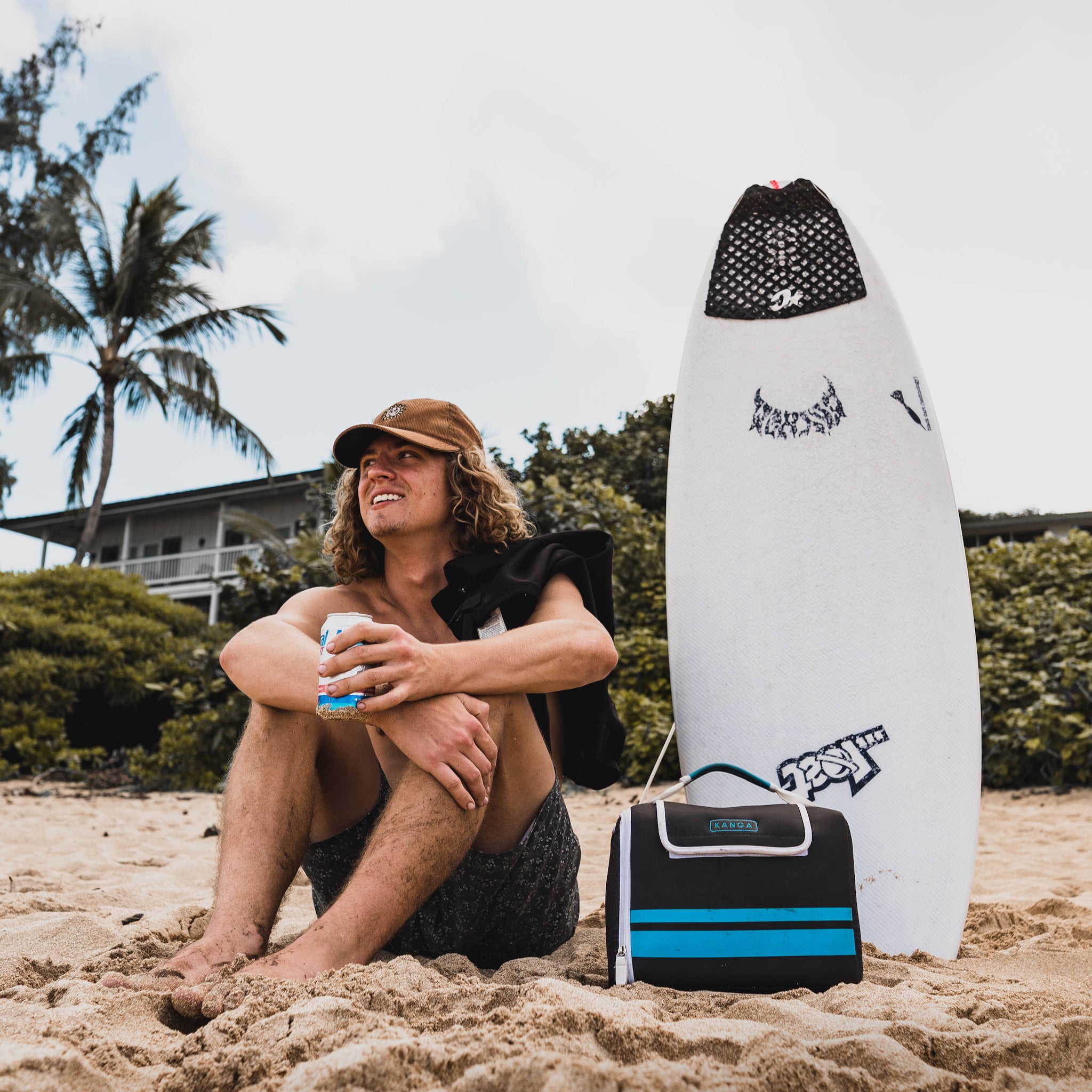
Felix: Where did you guys end up selling?
Austin: We did some events locally, and we were able to deplete those 150 units pretty quickly. We were starting to get a website built at that time, but it was really just leaning on the local community. The first time that we engaged some e-commerce opportunity is when we launched a Kickstarter campaign because you've got to think about it, when there are four or five college students starting a company, we really had no access to capital whatsoever. So to initiate a large scale production run and take that risk of holding on to inventory was just not something that was really in our scope.
We found that Kickstarter was going to be an easy way for us to have that low-risk opportunity and collect the cash up front before we went into the production side of things, and that's what helped us get the company off the ground and launch the first production run.
Felix: Were the first 150 all done by the seamstress that you guys had met?
Kyle: The seamstress made the prototype and then we found a local manufacturer who t in the Greenville area and they were able to ramp it up a little bit for us, but we knew that that wasn't going to be the solution after the feedback we got, and so we were able to actually win a pitch competition, which was a mini Shark Tank-style that our university hosted. We got first place and $8000, which helped us file for patents at an early stage, and that led us to was our first investor and mentor, who had a lot of experience in sourcing products, especially consumer goods overseas. It led us to a connection with a factory in China, and that's who we engaged when we were planning out our Kickstarter campaign.
Questions that led to constructive feedback
Felix: What kind of feedback were you getting?
Kyle: The most important thing is just to let people use it in whatever environment they think it's going to be the best fit for them. So we came up with the idea to solve our tailgating problems, but that didn't necessarily mean that that was the only problem that it was going to solve, so we just got these into the customer's hands and we were able to send out forms after and ask them 100 questions.
"Where did you use this? How long did it work for you? What type of beverage did you put inside? What would you improve about the product? What did you actually like about the product? Did you think the price point was fair?" Just kind of unload everything that you possibly could, and for the people that took the time to sit down and actually criticize us, that was the feedback that was the most important for us.
Of course, you're going to have the friends who are just going to say, "Man, this is perfect the way it is!" But that's not helpful. It was really the people who broke it down and kind of ripped us apart that helped out the most.

Felix: Now that the business is much bigger, has the feedback that the initial 150 given you changed as you've scaled up, or has it pretty much stayed the same from that initial 150?
Austin: It's changed a lot. So since getting that feedback, we've improved the product drastically, we've bulked up the insulation, added a handle, and just tried to make it more of a premium product. Less knick-knacky and more something that when you get it, you want to hold on to, and keep close to the heart. So we found that people love using it around the house, it's great for dinner parties like barbecues. We found a need in the casual use cooler, being that ultimately it saves you a trip to the store, it's easy to use, and it's just, you grab it from the fridge, slide it in and you've got cold drinks.
Kyle: It wasn't just the tailgate product, it was perfect for multiple occasions, and with the new round of feedback, because we're really big on that, we're always innovating, we're on iteration number four of the cooler right now, already working on iteration five and six, and obviously you don't want to get too caught up in always improving, but it's important to keep that on the horizon and we're really satisfied with the current version of the product. We're constantly trying to collect feedback and data and we send out email blasts all the time and we'll incentivize people with free koozies or free gifts in order to have them fill out a short survey and let us know what their experience was with the product because as a young company, we're still learning who exactly our customer is.
Felix: Do you find that the unsolicited feedback that you get, maybe from a customer email, they reach out to you unsolicited, is different from the feedback that you would get through these more solicited approaches, where you are offering them some kind of free gift or some kind of promotion to get them to provide that feedback?
Austin: One hundred percent. When people reach out to us, that's where we get a lot of our ideas from. Ultimately in the Kickstarter, actually one of the biggest things that happened out of that was Anheuser-Busch reached out to us because they saw the potential for the custom aspect of it, which we had never thought of.
One of the buyers from Bud-Lite reached out and was like, "Hey have you thought of doing B to B custom?" And then we constantly have people asking for, "Hey, do you have this school or this professional sports team?"
Kyle: Yeah, Felix, I'd say both definitely have merit and people's opinions are going to vary, and when we incentivize people to fill out a survey because we recently launched a six-pack and something that we did to allow early bird access to our six-pack cooler was to have them fill out a survey. And we realized that a lot of the feedback from that specific survey was skewed very positively, and we weren't sure if that was because the people just wanted to unlock that early bird special, versus if someone is just going to randomly send us an email and be more honest and more critical. Both have merit to it, and it's just kind of how you want to analyze and absorb the information that you have in front of you.
Finding a pricing sweet spot
Felix: Can you tell us about how much you sold those initial 150 at first, and what were the responses to the question about the price point?
Austin: We initially got the 12 and the 24 pack out at a $30 to $35 price point. In the initial version of that product, we definitely were overpriced. We knew it was overpriced, but that was the price point that we wanted to get the brand to. We really want to sit in that sweet spot of $30 to $40. It's a very giftable price point, it's affordable for young people even if you're still in college or if you're right out of college.
Felix: As you go through rounds of these surveys and asking questions, do your questions change as your product evolves, as the business grows?
Kyle: Yeah, so the important thing when you're asking questions, is you want to find out, what's the information that we want to know the most at that given time? So for iteration one, we just wanted to know, "Hey guys, does this product work, do you guys see yourself paying the $30 to $40 for the product?" And now the type of questions that we're going to be asking and that we are asking with this version of the product is, "Where can we go from here? What else can be done to the product to improve it?" Or, "What experience did you have with this that is now scalable for us, that you could see other people using it?"
Kyle: And the questions are definitely changing, but still to the core for us, we just want to know, did someone find value in this product, and did they have a positive experience when they used it, if they used it correctly. That's another challenge that we run into a lot, is that a lot of people think that it's either a lunchbox or just an insulated bag, and they don't take the entire cardboard base and put it inside the product.
Weekend hangouts turned marketing content
Felix: How do you use information from the use cases that your customers are telling you?
Austin: One big thing that we try to do is just figure out where our customers are in terms of the digital standpoint. We've got a group of interns that scour through social finding customer re-posts, anyone who has done anything with our product, used our hashtag, where are they posting pictures with it, as well as using our analytics to figure out what categories people fall into that are buying our products. We use Facebook's interest targeting for prospecting, and a lot of that is pulled from our affinity categories within Google Analytics. Figuring out what group that customer falls into, and ultimately where they're at digitally.
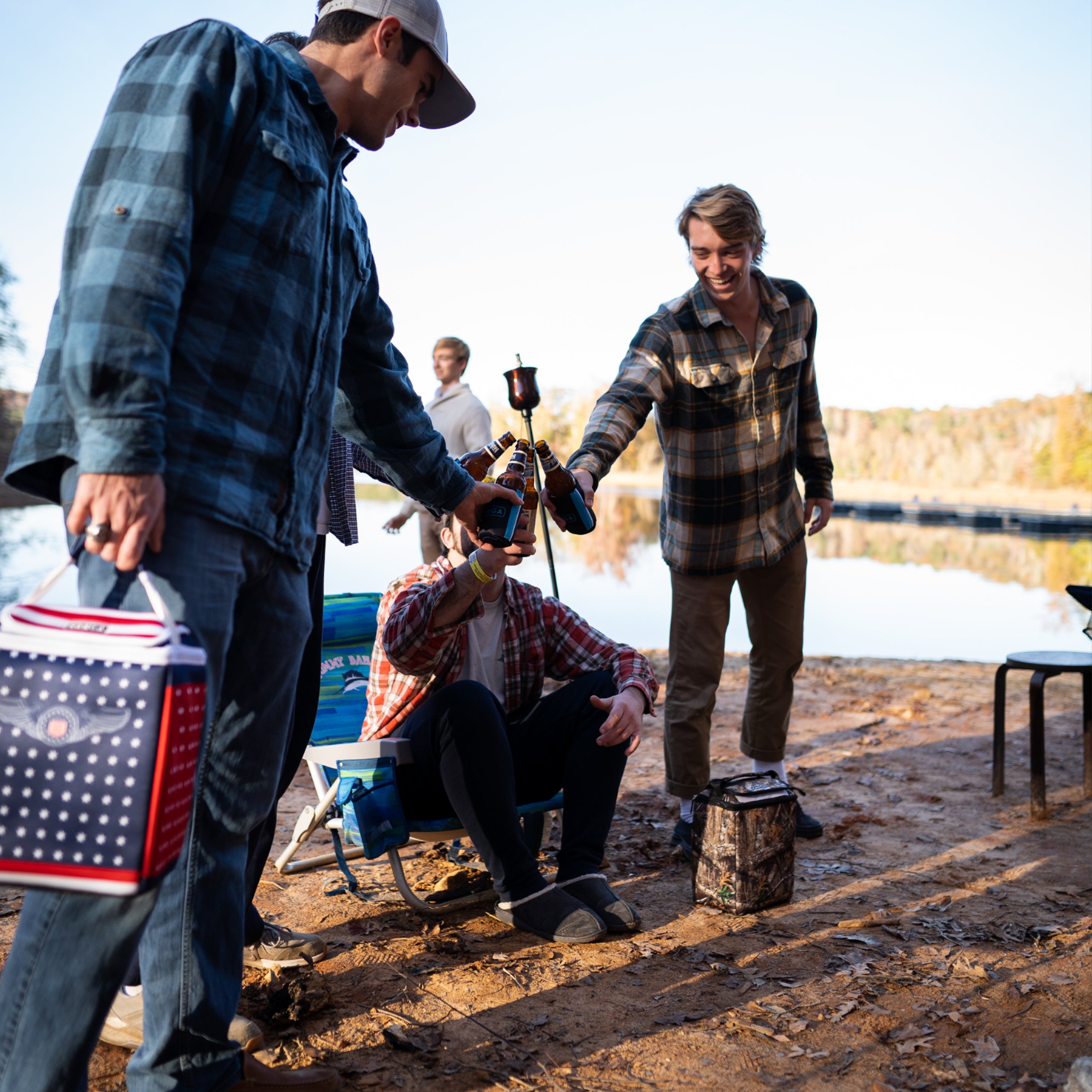
Felix: How do you create and change the content based on the targeting that you're doing?
Kyle: We have a great network and one of our co-founders, Teddy, he is one of the most talented people we've ever seen with a video camera in his hands, and we've built out a small team of media ambassadors who will help us execute content if and when it's needed. What's really unique about our team of five or six people is that all of us are extremely different. We're each customers of our product, but in different ways. We do very different activities on the weekend, and we all have different personalities, so we're actually able to bring a piece of each team member to the forefront when developing content, and basically say, "Hey Austin, whatever you're going to go do this weekend, let's film what you're doing this weekend with the Kase Mate, with our product, and collect content around that." Which is going to be very different from what Kyle is doing, so let's go get content from what Kyle is doing that weekend, and then we all come together and we're going to have five different opportunities to pinpoint five different audiences of people and be able to get them to picture themselves in that exact environment.
Felix: How do you use the different content that’s been created?
Austin: You have to test everything. That's the most important thing that we've learned from the e-commerce side of the business over the last 12 months is that certain things that you think are going to work really well are going to fail right in front of your face, and certain things that you thought were going to fail end up being the most traffic-driving and conversion-high piece of content that you really didn't even picture. You need to be open to testing and set a budget aside to just go ahead and throw $50 to $100 at these different types of ads, analyze the return, and then if it works for you, then maybe you need to go back and get more high-quality content around that same subject, and then double down on that. Triple down on that, and just always be monitoring and testing.
How long-form content pays off
Felix: What is your approach when you want to scale up?
Austin: It really depends on the type of ad. So with prospecting, you can throw more money behind it and get more people to the site, but then from that, you really have to focus on your re-targeting. So pairing those two together and figuring out what's working on both the prospecting and re-targeting side, that's extremely important. We have a similar testing structure for re-targeting. We try and do it as relevant as possible to the user, so we create custom audiences based on what their actions are on the site. So if they go to a specific product page or a media page or something of that nature, we target them with ads that show either that product or something that's in line with that media page being a branded video, lifestyle content, so on and so forth.
Kyle: What we've learned is that it's a constant balance between driving traffic and then converting customers on the site, and re-targeting falls in the middle there, but there will be times where we can drive a crazy amount of traffic to the site, but it's not going to convert it to what our standards are, and there will times when the site is converting really well, but our ads were not generating the traffic that we really were hoping or wanted to.
Felix: Once they have already seen your product and you're re-targeting them, what you like to go after then is more of the social proof, get the unbiased reviews from your customers or from some media outlet. What are these media pages that you are driving customers to?
Kyle: So we're not necessarily driving people to our media page. We get a lot of traffic to our media page, we try to create good long-form content that can be used in other forms, both from a branding standpoint and a marketing standpoint, kind of using that as a catchall. So like we said, we have Teddy who is just a wizard with the camera, and he is really passionate about creating movies, telling stories, so we try to pair those two together to get a balance of, hey, here's a little bit of branded content with marketing content, and use those together to ultimately help sell our product but also build our brand.
Austin: We started a reality TV series called The Fun Factory. The warehouse that we just moved into, we were previously in my partner's parents' basement, we were able to scrap together a couple of hundred bucks a month to afford a very large warehouse out in the middle of nowhere, but we have this 15 to 20 minute monthly reality TV series on YouTube called The Fun Factory, which is really just documenting the team's monthly lives and day to day lives, and whenever we do a fun event or go somewhere, however we're using the product and really just doing crazy, funny, stupid stuff. But what's unique about that is if you can capture someone's attention for that full 15 minutes, that's amazing, but what we're able to do is grab 15, 30, 60-second snippets from within that long-form content and run ads specifically on those smaller portions. We're able to grab a swipe up story, a 15-second swipe up story or a 30 second Instagram recap, and just find a way to distribute one piece of content in 10 or 20 different ways has been a really effective use of time.
Felix: What is that handholding or that process that gets them from watching a 15 second, 30-second clip of this long-form content into wanting to sign up for the email list?
Kyle: There isn't necessarily a call to action within the video itself, but we will put it in the caption sometimes, and then if we're just doing unique and funny and different stuff, and maybe someone had watched the full 20-minute video and then a day later when they see that 15-second snippet, it brings them back to that long video, and then we always make our website accessible. No matter what form of content it's distributed in, the website has to be accessible to people. And when it's accessible and available, it's a lot easier to get people to show up to your website. You never want to have someone having trouble searching for your site. It needs to be readily available at all times on all pieces of content that you distribute.
Austin: And an important thing to note is that those long-form contents is hosted on our website. So we want people to go there and then that's linked to YouTube. So if we can get people to the site to watch the different videos and the different documentaries, different people that we partner with, the longer you can keep them on the site, the more likely they are to shop around and maybe have an idea in the future of where they could use the product.
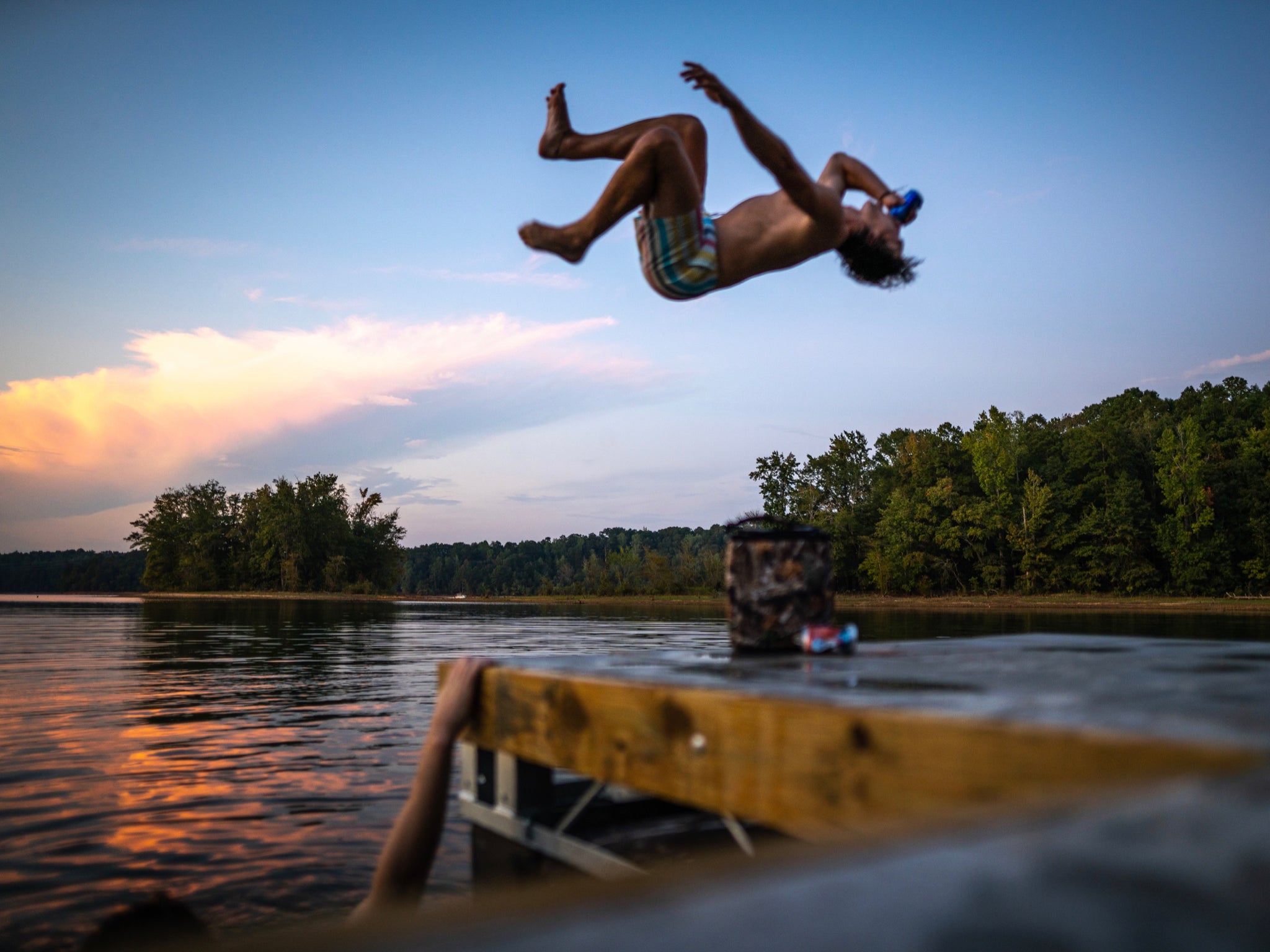
Apps and tools that help operations stay cool
Felix: I want to talk a little bit about the recommendations that you gave us about the applications you used, the first one here is OptInMonster, which you use for A/B tests, email sign-ups and the messaging and the landing pages. So tell us about this, how exactly do you use OptIn Monster on a day to day basis?
Austin: So if someone's on a product page and they're about to exit, OptinMonster can throw them some type of value, whether it be a code for a gift card on your next purchase, an add-on, like we do free koozies, or as we like to call them, "brewzies," or bottle openers, and just kind of capture that purchase when you have their attention.
Felix: You also mentioned you use the Shogun page builder for landing pages. How do you use that?
Kyle: Yeah, so based on whatever ad we're running, for example after Shark Tank, we just did a broad outreach ad, trying to target people who watch Shark Tank, people that we thought were in our core demographic of customers, and then we would go and drive them to a Shark Tank specific landing page. We made a big production documenting our journey to Shark Tank, called it, "No Way," just because we didn't expect to get the deal, it was kind of a surreal experience for us.
Felix: What do you guys think has been the biggest lesson that you've learned so far this year that you certainly want to take advantage of in the upcoming year?
Austin: Yeah I think for me personally, the biggest thing that I've learned has been to be open-minded when you're engaging new consumers, when you maybe have one idea in your mind of who your customer is, that might not necessarily be the case. After you do the rounds of testing after you get the feedback and after you analyze what people have said, you need to be open-minded to be able to adapt and change who that core customer. because coming out of the gates, we thought that this was a 21-year-old college student product just for tailgating, but now we're able to sell to 30, 40 year old people who are going to gift it away as part of a holiday gift for this upcoming season, who are going to take it on the boat, the golf course, take it to the beach.
Kyle: For me, I was just going to say, more of a personal thing, I really have learned the value of balancing work and life. Entrepreneurship is a really all-encompassing lifestyle and it can be really lonely, so finding that time to set aside, and really finding that balance is extremely important and ultimately will make you happier.
